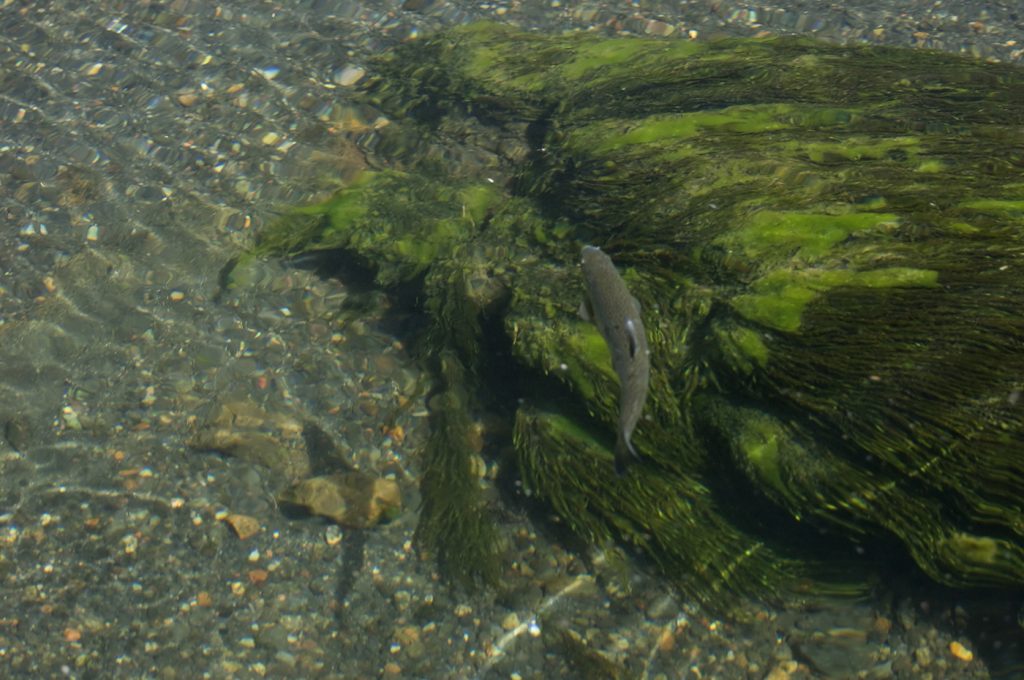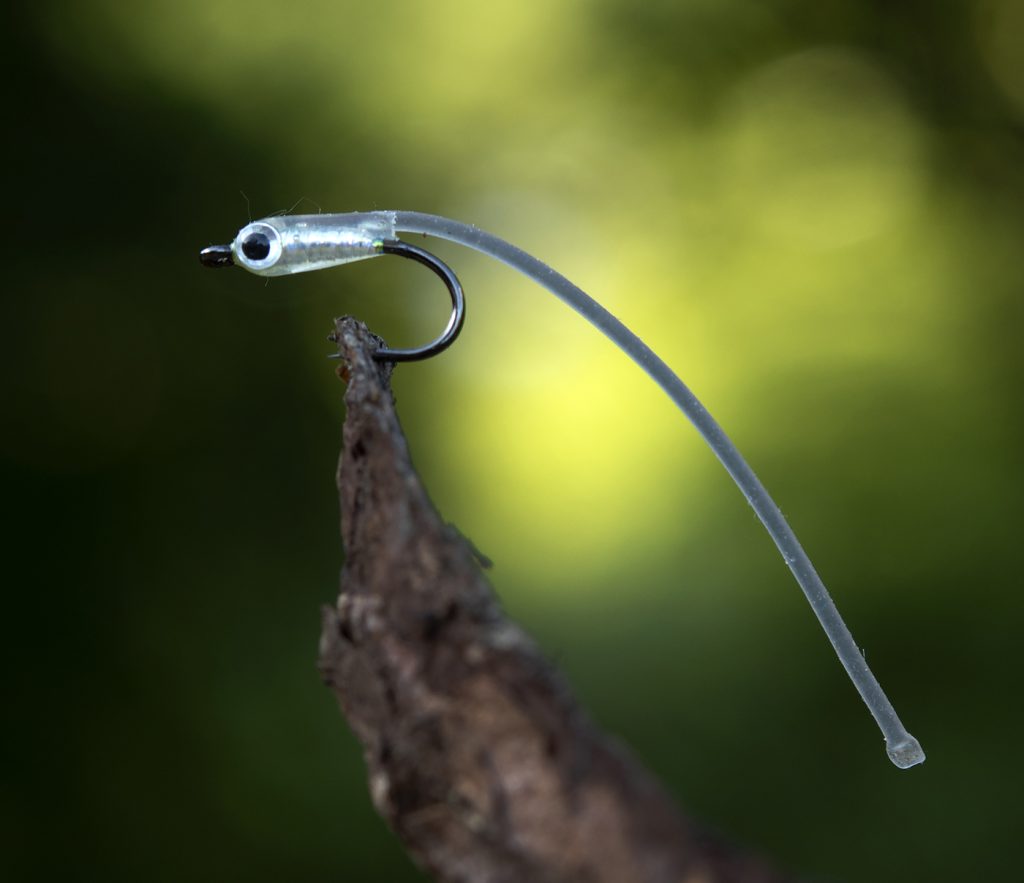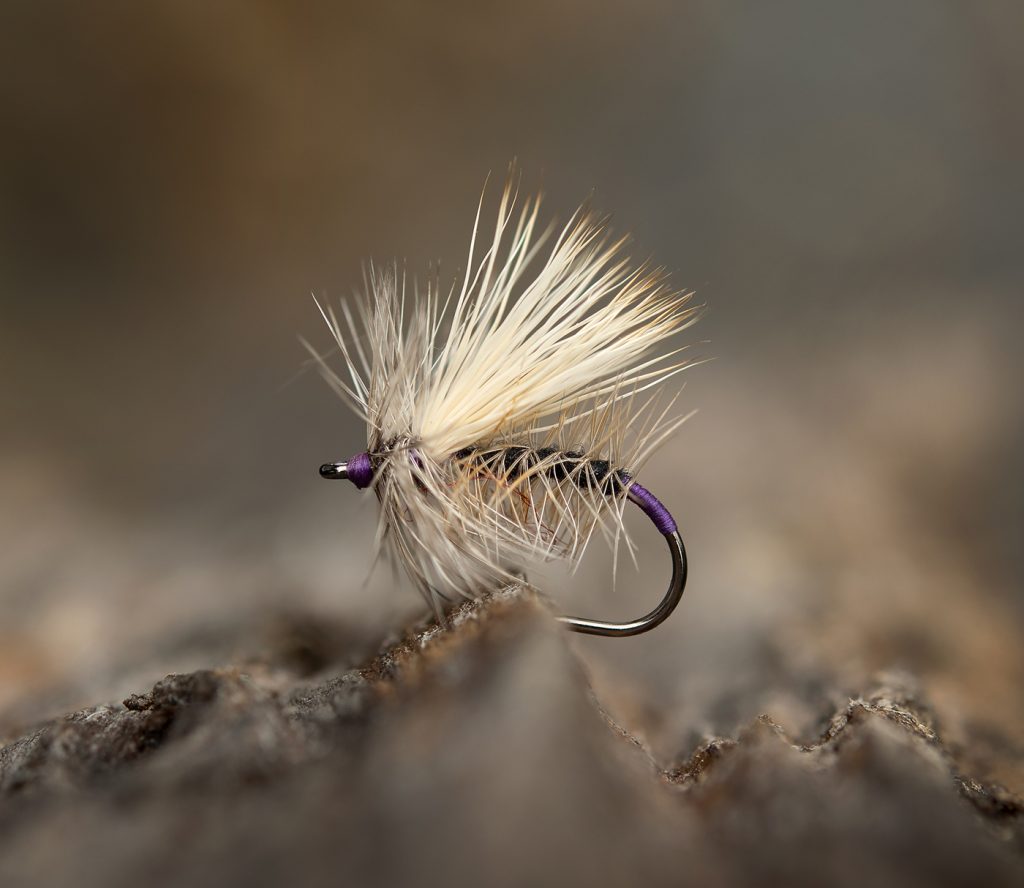
Small is always a matter of context. A small pike fly is infinitely larger than a small trout fly, but no matter the context, small flies are often important to have, often even the deciding factor between and take and a refusal.

A beautiful icelandic brown trout slowly sipping small midges, a size 22 did the trick.
In the context of most of the trout fishing I do, I would say that “small” is size 18. I’m sure Stefan Larsson would say that a size 16 is standard in his trout- and grayling fishing and that small might be size 20 and smaller. On the gin clear rivers in Bosnia, Slovenia and the surrounding contries, a size 20 nymph is often too big.

A Micro Fry White – tied by Kim Mäki on the Curved Dry size 16.
So we make small hooks. We make size 12 salt water hooks, which is quite small for that context, but a veritable anchor in the “small-trout-fly-world”. Hooks smaller than size 18, ie. from size 20 and down, are found in the FW 502/503, FW 506/507, FW 516/507, FW 562/503-series. But most of the FW-models are available as small as a size 18.
Sometimes you end up on rivers and streams, where fish feed primarily on really small insects in certain parts of the season. Sometimes you might get away with something “close enough”, but if the rivers are gin clear, maybe even with some fishing pressure, really small is sometimes the only way to get a take, be it on dry fly or nymph.

A Purple Micro Stimi tied by Tim Sickle.
Fishing the really small flies isn’t as such more difficult than fishing the larger flies. The presentations don’t change, they all need to be gentle and precise. The need for a drag free drift in the right feeding lane is the same. With the shy fish and clear water, something that often needs to change is the leader. You’ll always need thinner points, fishing a size 18 or smaller on anything thicker than a 0,12mm/6X makes little sense to me. A thicker leader will look like a rope on the fly. I know that for really shy trout, on really clear streams and in really low water, some experienced fly fishers will fish as thin as 0,08mm/8X, but that takes a lot of skill.

A nice danish grayling caught by Håkan Karsnäser on the smallest caddisfly in his box.
Some are wary of fishing to big fish with light tackle, thin leaders and small flies, but remember that when the tackle is well balanced, it’s not really a problem. It would be if you were fishing 6-wt lines and size 22 dries, but nobody really does that. 2/3/4-wt lines on corresponding rods do a good job of minimising the risk of breaking the leader. And a balanced setup gives you an intuitive feeling for just how much pressure the hook and leader and withstand (which is often more than one would think).
Keep things simple on the really small hooks. There’s no room for details and they rarely matter. I try boil things down to the bare essentials. This video, where Håkan ties his “Hatching Midge” really shows what I mean. Keep it simple!
